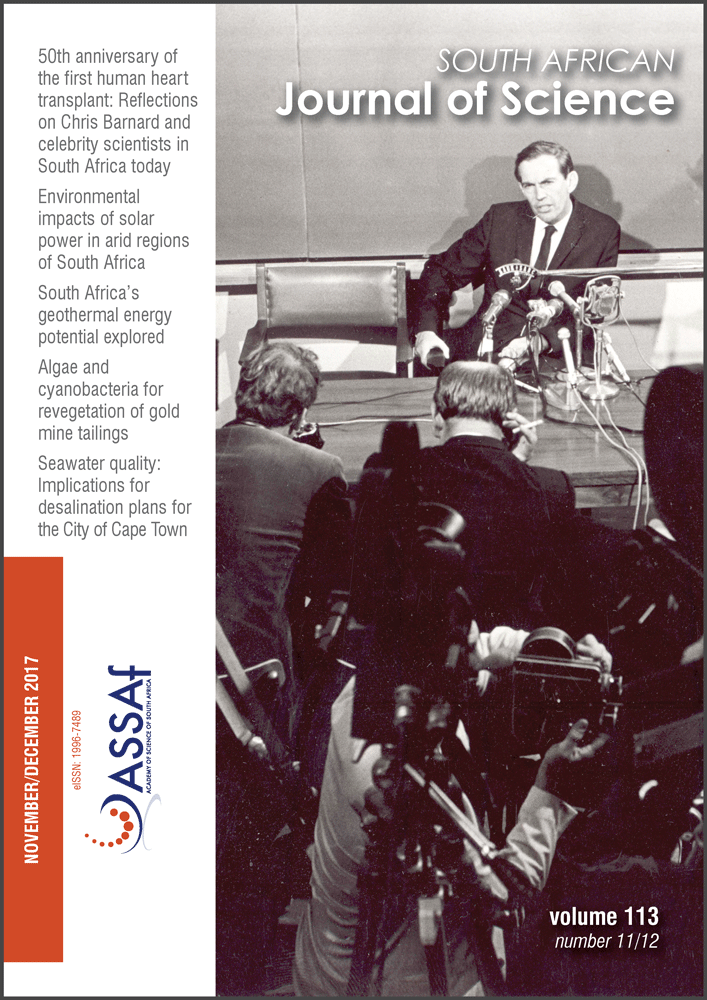Finding fossils in Malapa breccia – medical CT scanning or micro-CT scanning?
DOI:
https://doi.org/10.17159/sajs.2017/20170057Keywords:
Australopithecus sediba, manual preparation, kVp, beam energy, image qualityAbstract
Computed tomography (CT) imaging of fossils has revolutionised the field of palaeontology, allowing researchers to gain a better understanding of fossil anatomy, preservation and conservation. Micro focus X-ray computed tomography (μXCT) has been far more extensively used for these purposes than medical CT (XCT) – mostly because of the exquisite detail that the μXCT scanning modality, using slices of micron thicknesses, can produce. High energy X-rays can potentially penetrate breccia more effectively than lower energy beams. This study demonstrates that lower energy beams produce superior images for prioritising breccia for preparation. Additionally, XCT scanners are numerous, accessible, fast and relatively cost-effective when compared to μXCT scanners – the latter are not freely available, scanning times are much longer and there are significant limitations on the size and weight of scannable objects. Breccia blocks from Malapa were scanned at high and lower energy and images were analysed for image quality, artifact and certainty of diagnosis. Results show that lower energy images are deemed superior to higher energy images for this particular application. This finding, taken together with the limitations associated with the use of μXCT for the imaging of the large breccia from Malapa, shows that XCT is the better modality for this specific application. The ability to choose fossil-bearing breccia, ahead of manual mechanical preparation by laboratory technicians, would allow for the optimal use of limited resources, manual preparatory skills as well as the curtailment of costs.
Significance:- ‘Blind’ manual preparation of fossil-bearing breccia is a costly and time-consuming exercise – and often results in a low yield.
- The ability to triage fossil-bearing breccia ahead of manual preparation would allow for the optimal use of limited resources.
- Medical CT is better than micro-CT to triage breccia to allow for prioritisation of rocks for manual preparation.
Downloads
Published
Issue
Section
License

All articles are published under a Creative Commons Attribution 4.0 International Licence
Copyright is retained by the authors. Readers are welcome to reproduce, share and adapt the content without permission provided the source is attributed.
Disclaimer: The publisher and editors accept no responsibility for statements made by the authors
How to Cite
- Abstract 620
- PDF 632
- EPUB 243
- XML 308
- Supplementary Material 151
Funding data
-
University of the Witwatersrand, Johannesburg
Grant numbers 98839












.png)